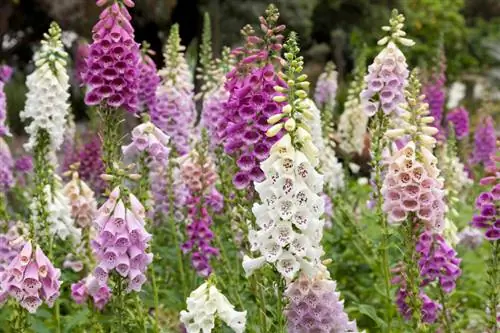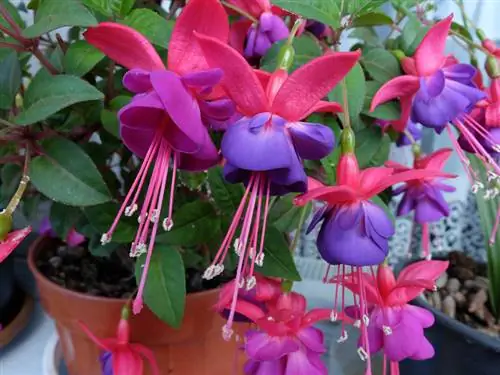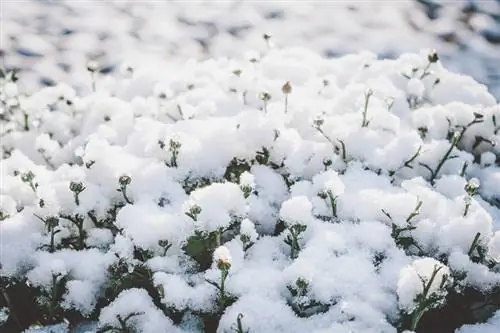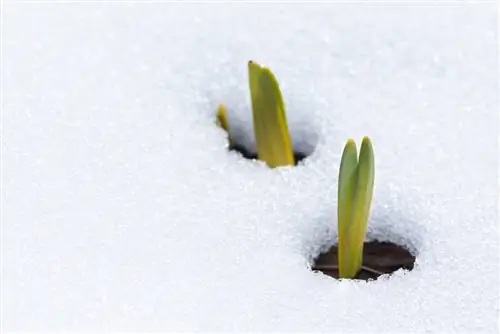- Author admin [email protected].
- Public 2023-12-16 16:46.
- Last modified 2025-01-23 11:20.
Have you bought a foxglove plant from your local garden center or have you sown the plant with your own hands? Now it's not blooming and winter is coming. What will become of the thimble?

Is foxglove hardy and how do I prepare it for winter?
The native foxglove is hardy and can withstand temperatures down to -18°C. In autumn it should be cut back to the ground. If you have foxgloves in the pot, we recommend a frost-free, cool location or a fleece wrap in winter to protect the roots.
Is foxglove hardy?
Foxglove species that are native to this country (red foxglove, yellow foxglove and large-flowered foxglove) are guaranteed to be hardy. Other well-known species such as the woolly foxglove and rusty foxglove are also hardy. These plants can usually tolerate temperatures down to -18 °C in winter.
Since lower temperatures rarely occur in winter, the foxglove survives the change from winter to spring. It doesn't matter whether it is in the sun or in the shade. For this reason, there is no need to visit wintering quarters.
How to prepare the foxglove for winter?
In autumn, the foxglove should be cut back to the ground. The cut can be omitted if the foxglove has already formed its seeds. These ripen in spring and ensure good reproduction of the plant.
If you have the foxglove in a bucket on the balcony or terrace, put it indoors or indoors in winter as a precaution.in a frost-free but cool place. This prevents its roots from freezing and dying. Alternatively, you can wrap the pot with fleece (€7.00 on Amazon) and place it on the balcony or terrace wall.
Mostly biennial, rarely perennial
Most foxglove species are biennial, but very few are naturally perennial. Foxglove is considered a semi-perennial or herbaceous plant that can grow persistently. It rarely becomes woody at the base because it invests too much energy in its flowers and its poisonous nature and in most cases dies after seed formation.
But you can give the foxglove a helping hand so that the foxglove sprouts and blooms again in the third year:
- cut off the withered flower stems in the 2nd year
- cut before forming seeds
- wear gloves when cutting (plant is poisonous!)
Tips & Tricks
Over the winter, foxglove leaves provide a valuable touch of green in the landscape. Gardeners who have planted an entire bed with it will not have to search for green.






